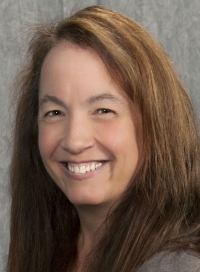Springs Charter Schools offer 65 multi-age (combination) classes, which serve 1,600 students of all grades and locations. While they can be formed for practical reasons, they are often intentionally created because they fit in well with the Springs’ philosophy of personalized learning for their students, said Deb Essel, Springs’ Assistant Superintendent of Education.
“The multi-age classes give us the opportunity to adapt classroom learning to each child’s learning needs,” she noted.
Multi-age classrooms create a family environment, she explained, in which older children can tutor younger ones, and older children can get a better grasp of material by being able to explain it to younger ones. She continued, “It can be less stressful for a child to receive instruction from a peer, and he can be more comfortable asking questions. At times, in fact, a child can actually be more effective explaining material to another child.”
Younger students can also learn mature behavior from older students, as they tend to model the behavior of older peers.
Deb pointed to professional studies which indicated the success of multi-age classes. In one, benefits included creation of a classroom environment of expected cooperation. Lower grade students perceived the older students as being able to contribute something; older students saw younger ones as in need of their contributions. Teachers also benefit, as they don’t feel they’re the only ones able to give something in the classroom.
In another study, multi-age classes were found to reflect an emphasis on students’ individual needs and progression, rather than a whole-class progression through a prescribed curriculum at the same time and pace. Deb added, “Even in single-grade classrooms, you can have two children with the same chronological age, but who develop mentally at different speeds.”
Key to success of multi-age classes is the training of their teachers, Deb believes. Multi-age classes are structured differently than single-grade classes, and teachers must also be ready to collaborate more frequently with fellow teachers.
Once teachers have experience teaching multi-age classes, they see their benefits. Deb remarked, “Many teachers tell me they wouldn’t go back to single-grade classrooms. They see how beautifully it can work, and how well it works with Springs’ philosophy of personalized learning.”
Key to success of multi-age classes, Deb noted, is the training of their teachers. Multi-age classes are structured differently than single-grade classes. Teachers must also be ready to collaborate more frequently with fellow teachers.
While teachers may be reluctant to train for multi-age classes, once they’ve begun teaching them, they see their benefits. Deb remarked, “Many teachers tell me they wouldn’t go back to single-grade classrooms. They see how well it works with Springs’ philosophy of personalized learning.”




